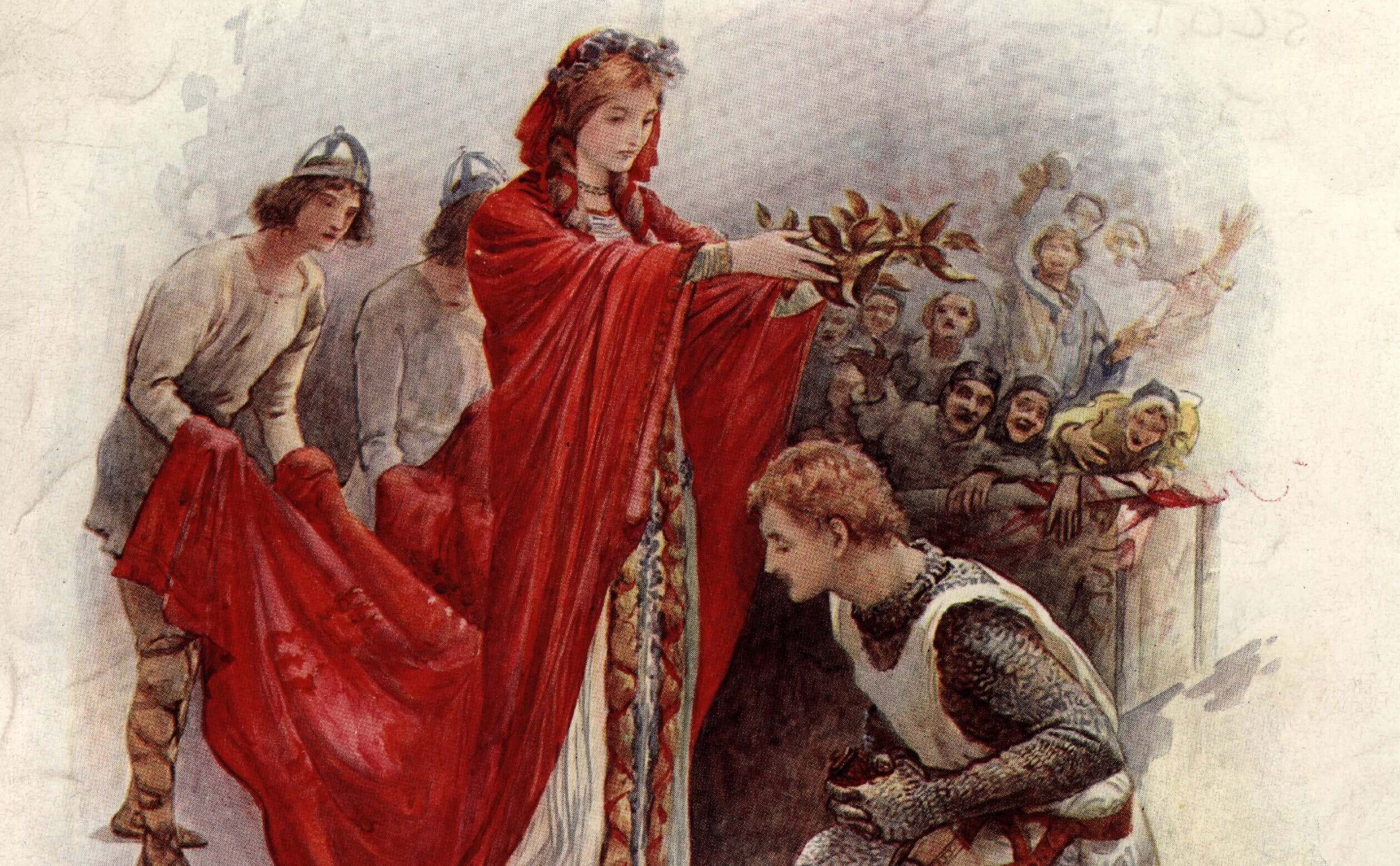Out of the Ashes:
Rebuilding American Culture
By Anthony Esolen
(Regnery, 2017)
Anthony Esolen is a literary scholar who has translated Dante’s Divine Comedy and written popular books criticizing contemporary manners and mores. As befits a literary scholar, his critique has focused on the corrosive effects of modern society on the imaginative and affective lives of the young. Out of the Ashes is about failures in educating and cultivating girls and boys (or “lads,” as Esolen tends to call them). The principal virtue of this book is that the men and women who are already rebuilding the culture will feel validated in their work. Husbands and wives who have scrimped so the father can work while the mother creates a nest and homeschools the children will particularly enjoy this book. The many conservative religious families who have for decades made education the focus of their lives will take a justified pleasure in the tongue-lashing the author gives to the kind of upbringing that produces male pornography addicts and “whores” (as Esolen tends to call poorly brought-up girls). The author writes for an audience he knows, and it is clear from his rhetoric and arguments that this is not a work of apologetics aimed at a nonbelieving audience but rather a book written to fire the hearts of the faithful.
Indeed, it will fire many hearts because Esolen’s prose is so delicious that it makes his polemic a page-turner. It is not just that Esolen, a respected translator of Dante, is a good writer. This Dante scholar also has the poet’s eye for metaphor. He often rewards the reader with a metaphor that provides genuine insight, as when he exhorts us to “rip out the plywood.” In the course of explaining how we must “restore a sense of beauty” to our dwellings, schools, and churches, Esolen recounts that, while restoring an old rectory, he and his friends removed the moldy carpeting and found plywood underneath. Expecting to find only the subfloor, they were delighted by the discovery of “oak and maple floors, with three-inch-wide strips laid in handsome patterns, squares enclosing diagonals, and a large diamond set in the center of the original parlor.” This impressive piece of workmanship was a handsome prize for stripping out the artificial covering that had been tastelessly laid over the original! “Rip out the plywood” stands as a strong analogy for Esolen’s whole project, which aims to remove the fake and pretentious coverings that currently distort human nature, and to disclose the maker’s work, patiently awaiting rediscovery underneath.
Esolen’s first prescription for restoring the culture is to tell the truth. He sees original sin as “believing the lie,” that is, Eve’s willing self-deception in believing the serpent’s lie. Thereafter, it means either deliberately lying or inadvertently propagating untruth. Esolen is very much a truth teller, and this is part of what makes his book palatable only for those who have been consuming heavy doses of the Esolen treatment for some time. Esolen puts his finger on the problem in a way that few authors dare.
Consider the widespread, and justified, popularity that localism enjoys today. Then consider how few of our contemporaries would dream of proposing this honest solution to the evisceration of real localities: “Because children should be able to play freely outdoors . . . there should be neighborhoods for them to play in. Because there should be neighborhoods, there should be in those locales the natural . . . monitors of the neighborhood: elderly people on their porches, many mothers, and men and women at work in family businesses nearby. Because there should be such neighborhoods filled with people, our social policies should favor them and support them. . . . Therefore we should not subordinate the family to work; the double-income family should not be the norm; we should reconsider all things that tend to remove father and then also mother far from the place where they live.” In America, artificially created suburbs obscure what lies “under the plywood.” But in the old cities of Europe, one can still see the remains of family businesses like butchers and grocers, which used to exist right in the middle of a community that was fully inhabited at all times of the day. We cannot honestly present ourselves as defenders of “localism” unless, like Esolen, we are prepared to go to the root of what fosters, and what destroys, localities. Such observations make Out of the Ashes a worthwhile exercise in lifting the veil of propaganda and self-deception that blankets our culture.
Esolen’s chapter on play is called “Playing upon the Waters: Bringing Play Back to Life.” In it he quotes Josef Pieper’s great work Leisure: The Basis of Culture to support his point that free time and unstructured activity are not merely distractions for children—or for adults. Although Esolen has become a hero to conservative folk owing to his travails at Providence College, Out of the Ashes is not a work of that caliber. This is worth mentioning because those hard-working, intelligent mothers and fathers who sacrifice so much to foster their children, their families, and their neighborhoods deserve books as good as Pieper’s.
The problem in Esolen’s narrative is that the parents of the 1890s were carrying out his prescriptions to a T, yet their children were those who first, as Esolen would have it, set fire to the culture. Of course, it took a few generations to leave us with naught but ashes. But when the fire started, people were educated exactly as Esolen would wish. Esolen mentions the novelist Laura Ingalls Wilder receiving a much-treasured gift for her sixteenth birthday out on the prairies of South Dakota. It was a volume of poetry by Alfred Lord Tennyson. Esolen notes that “my college freshmen now do not even know who Tennyson was.” Esolen doesn’t mention that, in Little House on the Prairie, young Laura was disappointed in the poem she read first, “The Lotus Eaters.” It seems that a taste for great literature is not spontaneous and was not universal even in the good old days.
Esolen’s second prescription, after telling the truth, is restoring the school. Here he spends several pages building an encomium to the one-room schoolhouse. That’s the kind of schoolhouse that Laura Ingalls studied and taught in herself. He adds that children must learn grammar. The reader may think of Laura, parsing a sentence in order to obtain her first teaching certificate.
I hope I won’t be accused of schoolmarmish pedantry if I complain that all this makes me think about Rose Wilder Lane, Laura’s daughter. Born in the 1890s, Rose must have studied in something like that schoolhouse and surely learned to parse with the best of them. But she grew up to be a rather unhappy feminist whose marriages failed and who encouraged the misconception that she was the genius behind her mother’s “Little House” books. People can be and were educated just as Anthony Esolen thinks they ought to be and still break bad, hate their parents, have no offspring of their own, and go so far as to admire Ayn Rand. Laura’s daughter did all these things, poor woman.
It is not just that people raised by good parents, and educated in grammar and arithmetic in good schools, might go to the bad. It’s that the worst influences on the culture of the last century, from John Dewey down to Gloria Steinem or the truly odious Erica Jong, were born and raised when boys were raised to be men, girls to be women. They didn’t study in one-room schoolhouses, but they certainly learned grammar. And all went to universities back in the days when “Western civilization” was still considered the core of a humanities education.
The crux of my complaint is that, in this book, Esolen describes the root of the problem, including the atomizing effects of modern suburbia, but does not examine or even suggest the cause of the problem. Why didn’t women want to stay home and mind the children? Why did pornography become a normal form of adolescent entertainment? Why did men give up on their “bands of brothers” and permit themselves to be feminized? Without a proposal about what has caused the firestorm in our culture, nothing seems to hold his book together. It comes to feel like a series of complaints that things today are worse than in the immediate aftermath of World War II and much, much worse since the end of the nineteenth century. At the start of the book, Esolen makes a good effort to rebut the charge of merely offering nostalgia. He says that if matters have degenerated, one ought to say so, or else one cannot fix the problem. That is true, but unless we grasp what caused the collapse of our culture, we will still lack the means for undoing the damage. This book is a great portrait of how our culture is failing to be fully human. It does not, however, exceed that high achievement. ♦
Francesca Murphy is professor of systematic theology at the University of Notre Dame.














